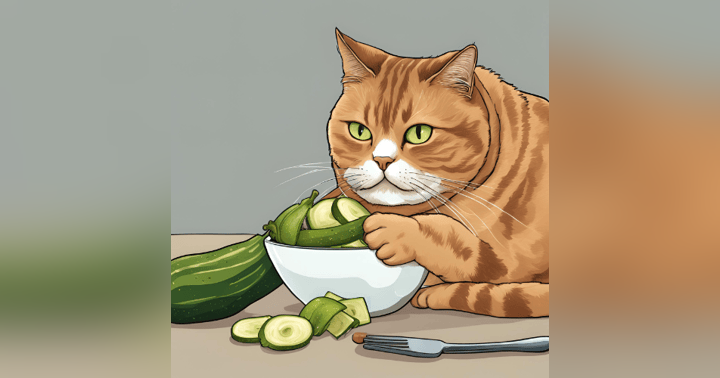#120: Rethink Diabetes: Why Basal Insulin is a Game-Changer In Feline Diabetes Management. With Dr Linda Fleeman.

This episode features an enlightening discussion with Dr. Linda Fleeman, an internationally renowned expert on veterinary diabetes management, focusing primarily on cats. Listeners are introduced to groundbreaking approaches that challenge traditional paradigms, such as the use of basal insulin protocols, flexible dosing schedules, and the dissociation of insulin administration from feeding times. Dr. Fleeman simplifies the complexities of managing feline diabetes by advocating for practical dietary adjustments, including low-carbohydrate wet foods and portion control. The conversation also highlights innovative monitoring methods, from urine glucose testing to the Freestyle Libre continuous glucose monitor, offering flexible solutions for different client needs. Packed with actionable insights, this episode empowers veterinarians to improve outcomes for diabetic patients while addressing common misconceptions and practical challenges.
What if I told you that your clients never have to worry about when they inject their diabetic cats with insulin, and still maintain beautiful glucose control? And timing insulin with meal times: forget about it!
Those are just some of the things you’ll learn about in this episode about using basal insulin in veterinary diabetic patients. We also discuss:
- Why you don't need fancy diets for good glucose control.
- How traditional glucose curves not necessary for monitoring diabetic cats on basal insulin.
- Great tips for using continuous glucose monitoring devices.
Dr Linda Fleeman is an internationally renowned veterinary expert on the treatment of diabetes, and is regularly invited to write textbook chapters and speak on this topic at international forums. Linda has worked in both university referral practice and general small animal practice, with her primary focus for more than 20 years being all aspects of diabetes in dogs and cats. She completed a Residency in Small Animal Medicine, followed by a PhD on the clinical management of diabetes mellitus in dogs. She’s held positions as Lecturer in Small Animal Medicine at the University of Queensland and Senior Lecturer in Small Animal Medicine at the University of Sydney before deciding to return to private clinical practice back in 2010. She currently does her work through Animal Diabetes Australia, the only diabetes-specific veterinary clinical service in the world, where she and her team pioneer ground-breaking diabetes treatments and management strategies and help practitioners better manage their patients through her consulting service.
Join our Specialist Support Space for case support for your tricky from our team of specialists, including diabetes case help from Dr Linda.
Subscribe to our RACE approved clinical continuing education podcasts for the show notes for this episode, a follow up session on managing diabetic dogs with basal insulin, plus hours of diabetes content with veterinary endocrinology guru Prof David Church, and over 450 other episodes in Medicine, Surgery and Emergency and Critical Care.
Subscribe to our weekly newsletter here for Hubert's favourite clinical and non-clinical learnings from the week.
Transforming Feline Diabetes Management with Basal Insulin
- Embracing Basal Insulin: Toujeo, a highly concentrated glargine insulin (300 units/ml), is designed to provide a flat and prolonged action profile, making it an ideal basal insulin for cats.
- Simplified Insulin Delivery: The higher concentration necessitates the use of insulin dosing pens for accurate measurement, eliminating the inaccuracies associated with traditional syringes.
- Flexible Dosing: While twice-daily injections are typically recommended, Toujeo's extended duration of action allows for flexibility in timing, making it less disruptive to owners' routines.
- De-Coupling Insulin from Meals: Basal insulin eliminates the need to synchronise insulin injections with meal times, a significant departure from conventional methods. This is because the background level of insulin provided by Toujeo is sufficient to manage blood glucose fluctuations even after meals.
- Wet Food is Key: Transitioning cats to a wet food diet is crucial as dry cat food is typically high in carbohydrates. Wet food, being naturally lower in carbohydrates and providing inherent portion control, helps minimise postprandial glucose spikes.
- Portion Control Matters: Even with wet food, portion control is essential to prevent obesity, which can worsen insulin resistance. Zucchini, a low-calorie, low-carbohydrate vegetable, can be offered as a healthy way to satisfy hungry cats without adding significant calories.
- Clinical Signs as Guides: Monitoring clinical signs like weight loss, excessive thirst, and urination provides valuable insights into the effectiveness of the treatment plan.
- Urine Glucose as an Early Indicator: Regular urine glucose monitoring allows owners to track blood glucose control. Consistent absence of glucose in the urine can indicate remission or the need to adjust the insulin dose.
- Embracing Continuous Glucose Monitoring: For more detailed insights and faster decision-making, continuous glucose monitoring devices like the Freestyle Libre can be extremely valuable.
- Home Blood Glucose Monitoring: While home blood glucose monitoring can be helpful, it’s crucial to collect multiple measurements (7-10) over time to account for day-to-day variability, rather than relying on single spot checks.
Effective Monitoring of Diabetic Cats: Moving Beyond Traditional Methods
- Observing Clinical Signs: Keep a close eye on your cat's weight, water intake, and urination frequency. Weight loss, excessive thirst (polydipsia), and frequent urination (polyuria) are classic signs of uncontrolled diabetes.
- Urine Glucose Monitoring: This simple and inexpensive method involves checking the cat's urine for glucose daily. Consistent absence of glucose suggests good control, potentially indicating remission or a need to lower the insulin dose.
- Home Blood Glucose Monitoring: While useful, it's crucial to collect 7-10 blood glucose readings over time, rather than relying on single spot checks, to account for day-to-day fluctuations.
- Continuous Glucose Monitoring (CGM): CGM devices, such as the Freestyle Libre, offer detailed insights into blood glucose patterns, aiding in faster decision-making.
- Monitoring results are not the goals themselves; they are tools to help you achieve the desired outcomes for your cat.
- The ultimate goals are to control clinical signs, improve your cat's quality of life, and potentially achieve diabetic remission.







